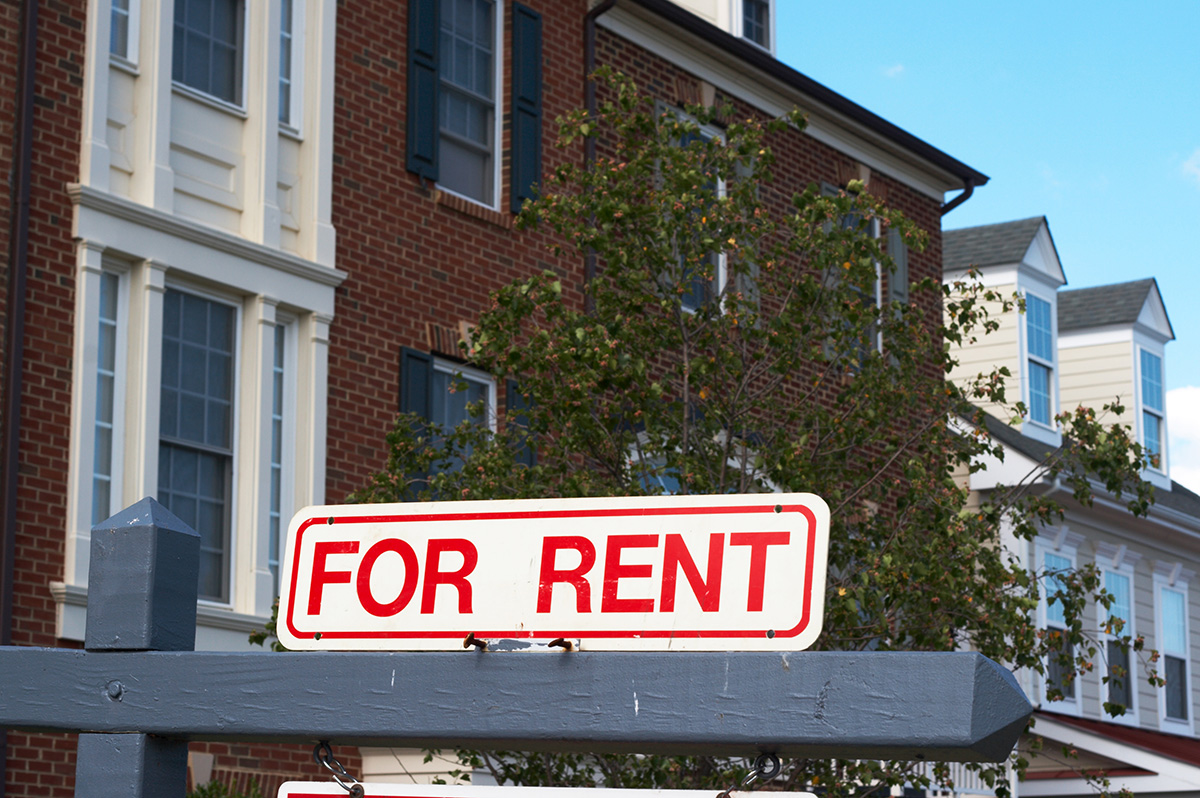Financial
Buying during the bustle
Holiday real estate market has some hidden advantages
For years we’ve been told about the Top 10.
Radio jocks give us the Top 10 Popular Songs, Money Magazine gives us the Top 10 Best Places to Retire, financial experts give us the Top 10 Best Master Card or Visa rates and Johnny Carson was the master with a Top 10 for everything. But, hey, since this article is being published on 11-11-11, I thought I’d go the extra mile.
This is the time of year when potential sellers start to ask me whether it’s a good idea to put their homes on the market now or wait until springtime (which in our local real estate world is actually late January or early February). Like anything in real estate, the short answer is, “It depends.”
I love selling real estate during the holidays. I’ve shown houses at half-time on Thanksgiving Day. I’ve written offers on Christmas Eve. I’ve attended settlements just before the ball dropped for the new year. So before you go into real estate hibernation for the winter, consider my top 11 reasons for selling now.
No. 11 — Interest rates are still low. Who knows what financing will look like in three to six months? My crystal ball is still a bit foggy on that issue, so look for a qualified buyer now.
No. 10 — Contractors are hungry. Ever try to get a contractor to do a small repair before putting your home on the market in April? Get someone quicker and maybe even save a buck during the late fall and winter.
No. 9 — Lenders have fewer loans to process. Less work can mean faster processing and a quicker settlement. It can also mean that lenders can spend more time to work out a credit issue or explain details of a special loan program, resulting in better-prepared, pre-approved buyers.
No. 8 — Our weather doesn’t deter buyers. I have less-than-fond memories of trudging through the snow in Minneapolis on a frigid December day to find a spectacular home of my own. No snowshoes required here.
No. 7 — We can preview homes in our pajamas. Hooray for the Internet! Sellers who have high quality photos online have the upper hand here, while buyers look through available listings at their leisure (and in their leisure attire) to find the right ones to see in person.
No. 6 — Paperwork is now available electronically. No longer do agents have to go out in the cold to deliver or review an offer and sit in the car while a buyer or seller makes a decision. Now we have high-capacity scanners and electronic signatures.
No. 5 — Your agent may have more time and attention to give.Agents can often be stretched to the max in the spring. Advice, counsel, personal attention, settlement gifts and even celebratory grog can flow more freely during the holiday season.
No. 4 — It’s the end of the (tax) year. Purchasing your home now can mean significant benefits for a buyer: tax credits from D.C. that may not be available after 2011, deductible interest and points, or simply a great investment for the future at a low interest rate. Be you buyer or seller, it’s always wise to consult your tax professional or financial planner to see when buying or selling makes the most sense for you.
No. 3 — Homes can look (and smell) more inviting during the holidays. Tree lights and bushes and candles that twinkle; gingerbread houses and cookies with sprinkles; door fronts with wreaths or tied up with a bow: these are the things that set buyers aglow (with apologies to Julie Andrews and the von Trapp family).
No. 2 — The serious buyers are out there. People transfer in and out of the D.C. metropolitan area in hoards. Most employers don’t care much if you would rather be looking for a home or cooking a Thanksgiving turkey over the long weekend and many want you at your desk and on the job early in January.
No. 1 — There is less competition from other sellers. Guess what? Not everyone who is considering selling is reading this article.
Valerie Blake can be reached at 202-246-8602 or[email protected]. Prudential PenFed Realty is an independently owned and operated member of Prudential Real Estate Affiliates, Inc., a Prudential Financial company.

Whether you are upgrading parts of your current home to prepare it for sale or enhancing the home you just purchased, kitchens and bathrooms are still at the top of the renovation list.
Kitchen renovations have always embraced a blend of functionality, personalization, and aesthetic appeal; however, homeowners are currently moving away from sterile, uniform designs, opting instead for spaces that reflect warmth, character, and individual style. Here are some of the most prominent trends shaping kitchen renovations this year.
Warm and Earthy Tones
The dominance of all-white kitchens is waning as homeowners gravitate toward warmer, earth-toned palettes. Shades like sage green, navy blue, and natural wood finishes are becoming popular choices for cabinetry, infusing kitchens with a cozy and inviting atmosphere. This shift reflects a desire for spaces that feel more personalized and less clinical. Flat panel and Shaker cabinets continue to be popular options.
Integration of Organic Modernism
The “modern organic” style is gaining traction, characterized by using natural materials, neutral color palettes, and serene layouts. Incorporating elements like soapstone countertops, Venetian plaster walls, slate floors, and greenery not only enhances aesthetic appeal but can also increase home values significantly. Fully outfitted outdoor kitchens further contribute to this trend.
Innovative Kitchen Island Designs
Kitchen islands continue to be central features, with designs evolving to incorporate textures, wood and tile cladding, multifunctional elements, and bold colors and materials. Integrated seating areas, waterfall countertops, and the use of monolithic stone or stacked marble are becoming increasingly popular. These islands not only serve as functional workspaces but also as striking focal points within the kitchen.
Concealed Kitchens for a Sleek Look
The concept of concealed kitchens is on the rise, emphasizing built-in appliances, flush cabinetry, and appliance garages to maintain a clutter-free environment. This design approach fosters a minimalist aesthetic, creating a seamless flow between the kitchen and adjacent living areas, particularly in open-concept homes.
Personalized Cabinetry and Storage Solutions
Customization is key in modern kitchen designs, with homeowners seeking tailored storage solutions that cater to their specific needs. Features like hidden storage compartments, integrated lighting, and unique hardware choices are being favored over generic, cookie-cutter options. This trend underscores a move toward kitchens that are both functional and reflective of personal style.
Revival of Traditional Styles with Modern Twists
Traditional kitchen styles are making a comeback, with a contemporary twist. Elements such as expanded backsplash coverage, classic tile shapes and patterns, use of mixed metals, and specialty appliances are being integrated into modern kitchens, blending the charm of the past with the conveniences of the present. Custom range hoods, coffee bars and microwave drawers are increasingly added to renovation projects. This fusion creates spaces that are both timeless and equipped for modern living.
Sustainable and Natural Materials
Sustainability remains a priority, with an increased use of eco-friendly materials like reclaimed wood, recycled metals and glass, and energy-efficient appliances. This not only reduces environmental impact but also introduces unique texture and shimmer into kitchen designs, adding depth and character to the space.
Use of Bold Colors and Accents
Homeowners are becoming more adventurous with color and texture, incorporating vibrant hues and tactile materials into their kitchen designs. Features like colorful window trims, two-tone cabinets, and the use of wallpaper and feature walls add visual interest and a personalized touch to the space. In addition to the familiar white, major appliances are now shown in matte black, navy, and jewel tones of red, green, and blue. There are even vinyl wraps and magnet covers that allow for more creativity and individualization with appliances.
Integration of Smart Technology
The incorporation of smart technology continues to grow, with appliances featuring automated cooking functions, sensor reheating, and control locks becoming more prevalent. Induction stoves are entering the mix. Charging stations and touch-activated cabinet doors and faucets are also popular. LED lighting lasts longer and prevents you from having to climb a ladder to change lightbulbs on a high or vaulted ceiling. These advancements enhance convenience and efficiency, aligning with the modern homeowner’s desire for a kitchen that supports a tech-savvy and busy lifestyle.
Multifunctional Spaces
Kitchens are increasingly being designed as multifunctional spaces that accommodate cooking, dining, working, and socializing. This has led to the inclusion of features like integrated seating, versatile lighting, and adaptable layouts that can easily transition between different uses, reflecting the evolving role of the kitchen in contemporary homes. Still, don’t be surprised to see a resurgence of self-contained kitchens with real walls.
So, whether the kitchen you want is sleek and modern, earthy and organic, or traditional and elegant, there will always be fresh new styles, ideas, innovations and classic touches that cater to your lifestyle.
Valerie M. Blake is a licensed Associate Broker in D.C., Maryland, and Virginia with RLAH @properties. Call or text her at 202-246-8602, email her via DCHomeQuest.com, or follow her on Facebook at TheRealst8ofAffairs.

Spring is the season of renewal—a time to refresh, declutter, and make space for better things. But spring cleaning isn’t just for your home. Whether you’re a landlord or a tenant, it’s the perfect opportunity to reassess your rental relationship.
Are landlords feeling disconnected from tenants? Are tenants feeling like their landlord is absent? Before considering drastic steps like moving, both sides can take positive, proactive measures to improve communication, set clearer expectations, and foster a mutually beneficial relationship. This article encourages both landlords and tenants to take stock of their rental experiences and explore ways to clean up misunderstandings before they become deal-breakers.
1. Dust Off the Lease: Revisit Foundation of Your Relationship
The lease is the roadmap of your rental journey. Are both sides following it?
For Landlords:
• Review Key Terms: Ensure you fully understand your obligations under the lease and DC law, including maintaining a habitable unit, providing essential services like heat and water, and ensuring repairs are done for safety compliance.
• Clarify Expectations: Is there a disconnect between your expectations per the lease and what you are observing at the rental? Remind tenants of areas that are covered in the lease in a proactive and positive manner to make sure all are on the same page.
• Mid-Lease Check-Ins: A casual mid-lease meeting or email can clarify expectations and correct misunderstandings or interpretations of responsibilities before they become issues.
For Tenants:
• Understand Your Rights and Responsibilities: Review your lease to see what your landlord is required to provide. In DC, landlords must ensure safe, habitable living conditions, but cosmetic changes or upgrades are not guaranteed, unless specified in the lease.
• Know What’s Reasonable: Yes, you have a suite of rights in the District of Columbia which must be respected. Certain societal expectations may not be realistic if they weren’t part of the original agreement. You can always request improvements that are not required of the landlord, but be prepared to respectfully accept the outcome if the response is “No”.
• Proactive Communication: If you have concerns about your rental, present them as collaborative questions. For example, “I noticed X—how would you like for me to address this?”
2. Declutter Communication Channels
Miscommunication is often the root of rental frustrations. Let’s clean that up.
For Landlords:
• Preferred Methods of Communication: Are you providing clear ways for tenants to reach you? Ensure you’re responsive to emails, phone calls, or portal messages.
• Seasonal Reminders: Proactive messages about maintenance (e.g. start cutting the grass, apply pre-emergent weed control, etc) can reduce escalations later.
• Feedback Opportunities: Invite tenants to share concerns in a structured manner—perhaps a quarterly email check-in.
For Tenants:
• Respectful Clarity: When reaching out, be specific about your needs. Instead of “the heater isn’t working,” try “the heater hasn’t been turning on in the evenings and only blows cold air. Could someone check it this week?”
• Understanding Response Times: Some complex issues take longer to resolve. Remain reasonable on expectations and consider the explanations for delays. Understanding that cosmetic concerns may not be prioritized can also help.
• Log Your Communications: Keep a record of all major discussions for clarity and protection.
3. Polish the Relationship: Turn Good Experiences into Great Ones
Small efforts can shine a spotlight on the positive areas in your rental relationship.
For Landlords:
• Recognize Good Tenants: Expressing appreciation for on-time rent payments or good upkeep fosters goodwill.
• Offer Incentives: Small gestures like discounted renewal rates or minor upgrades can encourage long-term, responsible tenants.
• Educational Resources: Provide additional information on how your tenants can maintain aspects of the home, such as garbage disposal care or HVAC filter changes.
For Tenants:
• Be a Proactive Renter: Report maintenance issues promptly and keep the property clean and damage-free. Execute routine maintenance that is your responsibility, such as changing out air filters reliably.
• Community Mindset: Participate in neighborhood events or property meetings, which can strengthen your relationship with the landlord.
• Extend Courtesy: Flexibility with maintenance schedules and clear communication during repairs make things smoother for everyone.
4. Freshen Up Expectations: Reset Standards for Healthier Relationship
Spring is the perfect time to hit the reset button.
For Landlords:
• Collaborate on Solutions: If there are tenant issues (e.g., noise complaints), approach them with a solutions-oriented mindset.
• Transparency with Changes: If rent adjustments are necessary, provide clear explanations and as much notice as possible.
• Renewal Conversations: Discuss future plans early to avoid surprises at lease-end.
For Tenants:
• Understand Market Realities: Rising costs may mean rent increases. Assess whether your current rental still fits your budget and needs.
• Negotiate Thoughtfully: If requesting upgrades or improvements, frame them as benefits for both sides.
• Express Gratitude: A little appreciation can go a long way—thank your landlord for prompt repairs or responsiveness.
5. Knowing When to Move On
Sometimes, despite best efforts, it’s time for a change—but separation can still be positive.
For Landlords:
• Identify Red Flags: Consistent late payments, damage, or lease violations may necessitate initiating a conversation about a potential move for the tenant.
• Follow DC Regulations: The District of Columbia has strict tenant protection laws. Always provide proper notices and follow legal protocols to avoid complications.
• Exit with Professionalism: Treat the end of a lease as a business transition—keep emotions in check and document all steps.
For Tenants:
• Know When It’s Time to Go: If safety, habitability, or repeated issues aren’t resolved despite your best efforts, it may be time to move on.
• Provide Proper Notice: Adhere to lease terms regarding notice periods and leave the property in good condition.
• Leave on Good Terms: Positive references from previous landlords can make applying for future rentals more successful.
Conclusion: Spring Forward, Together
A little spring cleaning in your rental relationship can make a world of difference. For landlords, it’s about resetting expectations, enhancing communication, and retaining good tenants. For tenants, it’s about understanding your rights, being proactive, and collaborating for a better living experience. By refreshing how both sides approach the relationship, you can avoid unnecessary turnover and create a rental experience whereall parties can thrive. After all, sometimes a little tidying up is all it takes for a rental relationship to blossom anew.
Scott Bloom is owner and senior property manager at Columbia Property Management. For more information and resources, go to ColumbiaPM.com
Real Estate
Find a way to participate in the sharing economy
Earn extra cash by walking dogs, renting your car, and more

If you could turn back time, would you find a way to participate in the sharing economy? If you own a home, a car, or have other resources or skills, you may still be able to. So don’t fret, SNAP OUT OF IT! (Anyone getting the Cher references so far?)
Recently, companies like AirBnB, VRBO, Uber, Lyft, Couchsurfing, Upwork, TaskRabbit, LendingClub, Poshmark, Meowtel, Rover, and Neighborgoods (among others) are allowing people to share their resources. Goods and services such as cars, money, homes, couches, clothing, business skills, tech or maintenance, design, dog walking, financial and accounting help, graphic design, among other skills can be shared with others for a price. People are finding ways to use the underutilized resources of their time, possessions and knowledge to make extra money, pay down debt, pay off bills, finance vacations, or just pay for those expensive eggs.
For homeowners, these resources can help offset the costs of owning and financing a home or allow the bandwidth to finally take that three months abroad or six-month sabbatical they have been desiring. As with any investment of time or resources, you will have to assume some risk. If you are renting out your car or home, there will be wear and tear. If you are lending money, there is a risk of it not being returned. If you are selling gently used clothing online, the item could be returned, or the payment does not go through. These are risks one must take into consideration when starting any new enterprise. But as they say, without any risk, there can be no reward.
The sharing economy is based around peer-to-peer transactions. There is renewed emphasis on having experiences, less societal pressure for consumption, and embracing the access to experiences via online platforms. It’s not uncommon for many urban dwellers to own only one car, or not even own a car due to the access one has via the sharing economy. Vacations can be afforded via the peer-to-peer networks where a group of five people can stay in a luxurious setting at a favorite getaway destination for a fraction of the cost of a hotel and all meals out.
When one decides to venture into offering their home or car for these types of transactions, a wise tip to remember is that this is still operating a business. Customer service matters. Cleanliness, prompt attention and communication are key. It will require knowledge toward budgeting, setting competitive prices, creating memorable customer experiences, listening to constructive feedback, and using those customer service skills we all expect to see when we are dining out, staying at a hotel, or flying an airline.
If you would like to learn more about how to leverage your own resources to up your monthly income or free up your schedule, please don’t hesitate to reach out. I offer affordable seminars in creative thinking and digital marketing, to help people make use of their spare time, resources and energy.
Joseph Hudson is a referral agent with Metro Referrals. Reach him at 703-587-0597 or [email protected].















